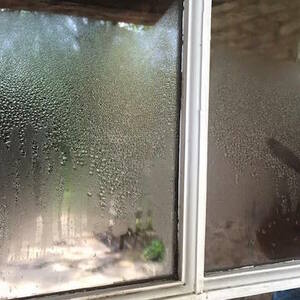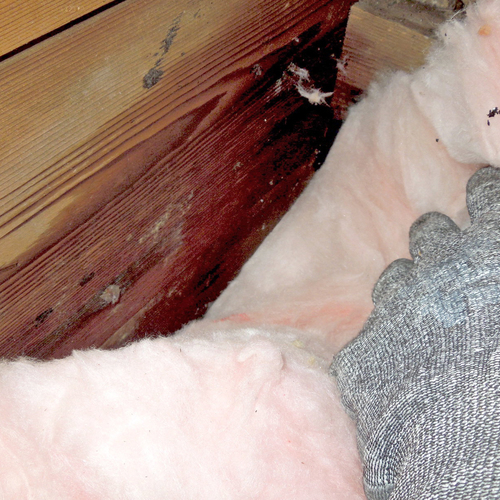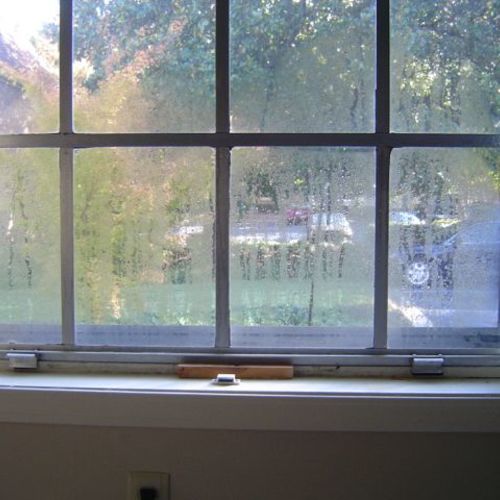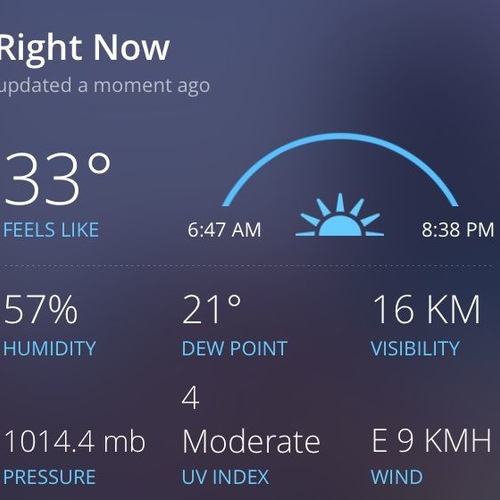
The photo above is the bottom side of an air conditioner in a crawlspace on Hilton Head Island, South Carolina. Those droplets tell us something important: A property of the air in that crawlspace aligned with a property of that surface to convert water vapor into liquid water. What are those two properties? And what else should we know about dew point? Let’s do a quick check on some important facts about dew point temperature and find out.
1. The dew point is a temperature
I’ve certainly been guilty of using the shorthand term “dew point” and will continue to do so. It’s important to remember, though, that whenever we talk about dew point, we’re talking about a temperature. It’s not a place or time or event. It’s a temperature. And the dew point temperature tells us when condensation like you see above will happen. It tells us about the potential for condensation but not the actual occurrence.
2. The dew point temperature is a property of the air
More correctly, the dew point temperature is a property only of the water vapor in the air. But we’re here on Earth. Our atmosphere and buildings are filled with both the dry air components (nitrogen, oxygen . . .) and water vapor, so it’s OK to say the dew point temperature is a property of the air. And that property is related to the concentration of water vapor in the air. The more water vapor per volume of air, the higher the dew point temperature will be. (The dew point temperature is also related to pressure.)
3. Materials have a temperature, but not a dew point
Dew point temperature is a property of a material in the vapor phase. That metal air conditioner in the photo is definitely not a vapor. It’s a solid material. It has a temperature. But it doesn’t have a dew point temperature unless you vaporize it.
Avoiding dew point confusion
The point I’m trying to make here is that condensation is the result of two separate properties being aligned: the dew point temperature of the air and the surface temperature of a material in contact with the air. The air has its dew point temperature. When a nearby surface has a temperature at or below the dew point temperature, condensation occurs. They’re two separate things.
There are other important facts about dew point temperature, too. In this article, my focus is on condensation only. Common places to find condensation include on a window when it’s cold outdoors, or on the bathroom mirror after your shower. Water vapor interacts differently with porous materials like drywall and wood, though. I’ve got things to say about that topic, too, but we’ll save it for another time. Meanwhile, if you want more, you can ponder whether it’s possible to get condensation on a sponge.
_______________________________________________________________________
Allison A. Bailes III, PhD is a speaker, writer, building science consultant, and the founder of Energy Vanguard in Decatur, Georgia. He has a doctorate in physics and writes the Energy Vanguard Blog. He is also writing a book on building science. You can follow him on Twitter at @EnergyVanguard.
Weekly Newsletter
Get building science and energy efficiency advice, plus special offers, in your inbox.















0 Comments
Log in or create an account to post a comment.
Sign up Log in